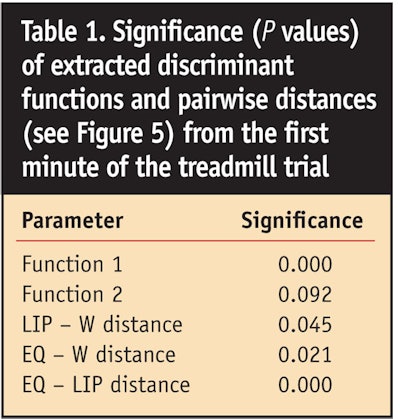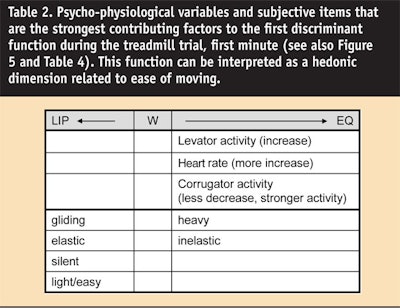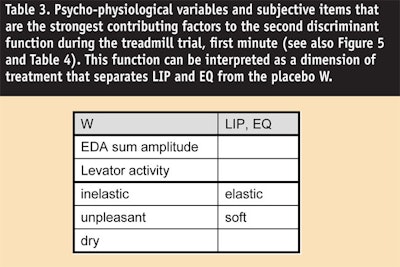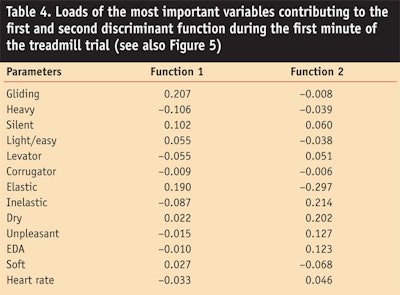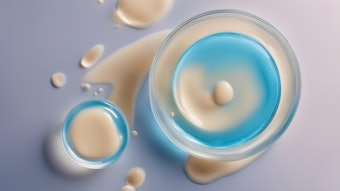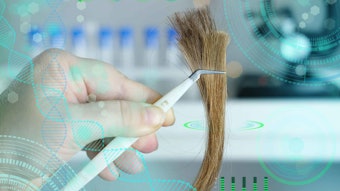Wellness concepts currently have conquered virtually every consumer product category. However, because wellness relates completely to subjective perception, it is difficult to prove that a product positioned in this way is not simply marketed as such, but actually shows a perceivable enhancement in the consumer’s well-being. Even a fine-tuned subjective assessment based on language cannot provide for a holistic determination of well-being, because such procedures are always subject to voluntary or involuntary “faking” and do not consider the often uncontrollable emotional dimensions that strongly influence supposedly objective perception.
To account for this challenge, the authors have recently developed a unique methodological approach based on the measurement of psycho-physiological parameters such as skin conductivity, heartbeat, electrical muscle signals and blood circulation in and near the skin
All of these physiological reactions are the result of unconscious mental processes that cannot be controlled. Thus, from such measurements, the emotional state of test persons can be inferred with high accuracy and without the need to ask volunteers directly. From a temporal point of view, these processes are generated much earlier than human speech; thus, they provide a direct and elementary insight into the psyche of volunteers.
The authors have successfully introduced this approach as Objective Emotional Assessment (OEA) in recent studies on cosmetic applications, where it proved to be a suitable methodology for objective evaluation of emotional consumer response. This procedure provides information on the overall physical and mental level of contentment or disaffection. With OEA, one can substantiate product claims strongly linked to well-being.
Foams
Foams play an important role in the consumer’s experience of cosmetic products. Therefore, the first study of OEA in a cosmetics setting was an evaluation of foam. Details of this study have been documented elsewhere.1 The aim of the study was to:
•investigate how the psycho-physiological test correlates with a linguistically based sensory assessment;
•add information on emotional and hedonistic foam qualities that could not be inferred from a linguistically based sensory assessment;
•identify foam qualities that may be crucial for the user’s acceptance; and
•predict the outcome of a second psycho-physiological assessment after a home use test.
The study was performed as a within-subjects design with 12 female panelists having excellent training in the sensory assessment of foams. Four well-described foams and a fifth foam, serving as a reference, were subjected to three types of evaluation. An OEA measured a variety of psycho-physiological parameters: electrodermal activity; electrocardiogram; finger pulse volume amplitude (PVA); and electromyographic activity of three facial muscles (Zygomaticus major, Levator labii and Corrugator supercilii). A subjective rating of the hedonistic qualities was obtained by attributing adjectives to those qualities and subsequently indicating the degree to which they apply. Finally, a sensory assessment was performed to compare the psycho-physiological measurements with results from subjective test methods.
In general, there was a very good correspondence between the results of the sensory assessment, the hedonistic description and the psycho-physiological reactions upon initial foam contact, during extended contact, and during handling of the four foams before home use. The reactions to the foams after home use could be predicted by the OEA.
The study showed that different kinds of foams could be distinguished in a double blind investigation using OEA. Other than by means of a traditional sensory assessment, OEA was able not only to differentiate the physical properties of the foams, but also to reveal their emotion-inducing properties that could not be assessed by the traditional techniques.
Tactile Hair Properties
Tactile properties of cosmetic products constitute weak stimuli and thus can be expected to be easily modified by mental images. In the realm of product testing, such mental images normally are created by a context or “world” not directly referring to the properties of a product itself. Instead, these worlds induce an imagined experience with the aim of linking the positive emotions from the imagined experience to the product in question. This is of particular importance for cosmetic products whose tactile properties constitute rather weak stimuli, especially in the presence of competition from optical and acoustical stimulation.
In a previously reported study,2 investigators used certain product worlds created by video clips to induce positive emotions prior to the subjects’ contact with the tactile stimuli. There were two product worlds: an emotional one, with a video clip of holiday travel scenes; and, for reason of contrast, a nonemotional or technical one, with a video clip from scientific documentaries describing hair properties and skin structure.
The products tested were a special hair shampoo containing a nanoparticulate layer silicate and a simple standard shampoo without this silicate. Both were applied to standard hair samples. An untreated hair sample was used as a standard for comparison. The study enrolled 12 males and 12 females, half of each being laymen and half being experts in sensory assessment. The two product worlds and the three different hair samples were presented to each subject in counter-balanced order of all six combinations. An OEA was applied and compared with a traditional sensory assessment.
Among the physiological measures, peripheral blood volume and facial muscle activity were the most sensitive in revealing effects of and interactions between the product worlds and hair samples. A multi-variate evaluation of the physiological data revealed three discriminant functions that explained 78.4% of the total variance and enabled a reclassification considerably better than chance.
The first discriminant function clearly separated the treated from the untreated hair samples; this separation was not possible by subjective ratings or traditional sensory assessment. The two other discriminant functions comprised a hedonistic and a product world factor. The emotional product world exerted the largest influence in case of the weakest tactile differences between the hair samples, and its influence was larger on laymen than on experts. Gender effects were most prominent in the subjective domain.
The authors concluded that multivariate psycho-physiological methodology is superior to traditional sensory assessment in revealing subtle differences in the tactile perception of cosmetic products.
Color and Scent
Intersensory phenomena frequently occur during the subjective assessment of consumer products and are very difficult to measure properly in an objective way.
For instance, changing the fragrance of a cream formulation can lead to a completely different subjective evaluation of skin smoothness or the cream’s pickup properties from the jar, although these properties have not changed at all objectively. Thus, the combination of different senses can result in a qualitatively new experience, and such observations are known as intersensory phenomena.
As previously described,3 a study was undertaken via OEA to assess the intersensory effects of color and scent. Matched combinations of color and fragrance were compared with apparently mismatched combinations in transparent gels. Specifically, transparent gel formulations were prepared with two different colors, green and red, and a strawberry or a green apple fragrance was added to each. This resulted in four different combinations, two of them representing perfect matches (red + strawberry; green + green apple) and two representing apparent mismatches (red + green apple; green + strawberry).
A special apparatus was constructed for presentation of the various stimuli to the volunteers. Furthermore, the order of stimuli presentation was varied according to a prime-probe concept.
Data analysis was carried out with multivariate statistics, which allowed identification of characteristic discriminant functions for the various experimental conditions and interpretation of their practical meaning in a straightforward way.
The results showed that OEA could be successfully applied to such weak stimuli as color and scent and there was a good differentiation of matched and mismatched combinations with respect to their activation and emotional effect on volunteers. A very subtle separation of stimuli was achieved, which allows deep insight into the mutual interdependency of color and scent.
Fabric
Complete details on this study are available in a previously published article.4 The highlights are presented here.
Experimental design: Cotton fabric samplesawere treated with fabric care formulations, namely an esterquat fabric conditioner (EQ) as a benchmark and a newly developed care formulation based on liposomes (LIP). The liposome shell is composed of lecithin (hydrogenated phosphatidylcholine) and cholesterol, while the core contains sodium PCA and sodium lactate as moisturizing agents. Additionally, water-only treated samples (W) were also included as a reference or placebo.
For all three treatments, a forced application was performed with a Foulard system; the fabric was soaked with the treatment and dried after removal of excess solution, forcing a certain amount of the treatment to remain on the fabric. The esterquat (bis-acyloxyethyl-hydroxyethyl methylammonium methosulfate) was applied as aqueous solution with 0.023% active substance, comparable to the concentration of a regular fabric softener usually applied via a household washing machine in the last rinse cycle. The liposomes were applied as aqueous dispersion with 0.2% active substance, comparable to a manual spray application. As reference and for dilution, tap water was used with 4 degrees dH (German hardness).
The treated fabrics were presented in two different modes. In the first mode, a rectangular sheet of cloth was pulled over the arms of the volunteers. This mode and its results are fully described elsewhere.4
The second mode of presentation was designed to ensure full body contact and thus an evaluation under more realistic “wear and move” conditions. The volunteers were asked to wear tailor-made cloak-like textiles that had been prepared from the treated fabrics, and to move on a treadmill under light physical stress at a walking speed of 3 km/hr (Figure 3). Psycho-physiological parameters were recorded in a first-contact phase of 1 min while the cloak was put on, in the first 3 min and the last 3 min of a 9-min walking phase. Data analysis was only done for the first minute of the first phase and the last minute of the last phase.
Following this procedure, a questionnaire was filled in with a ranking of 28 adjectives and four additional parameters from visual and acoustic perception and with additional questions on the subjectively experienced wear comfort. Each volunteer experienced only one of the treatment products.
To ensure a maximum contact with the cloak, the 48 female volunteers were asked to undress except for the underwear just before the treadmill trial. Consequently, the experiment was controlled by a female supervisor. Presentation of the treated fabrics was done double-blind, with a color coding: LIP = red label, EQ = black label and W = blue.
The following psycho-physiological parameters were used. Details on these parameters are available from the literature.1,2
•Electrodermal activity (EDA) = skin conductivity (Figure 1)
➣number of nonspecific electrodermal reactions
➣sum amplitude of electrodermal reactions
•Pulse volume amplitude (PVA) = blood flow in the finger periphery (Figure 1)
➣number of heartbeats
➣amplitude modulation
•Electrocardiogram (ECG) = heartbeat. ECG was measured during the trials, but results had to be excluded from data analysis because of motion-related artifacts.
➣mean inter-beat interval (IBI)
➣standard deviation of IBIs
➣mean square of successive differences (MQSD) of IBIs
•Electromyogram (EMG) showing mean activity of each of these facial muscles (Figure 2)
➣Corrugator supercilii
➣Levator labii superioris
➣Zygomaticus major
A thorough statistical analysis was carried out with the experimental data using commercial softwareb. To compensate for inter-individual differences at the beginning, in every case the baseline data from the rest phases were subtracted from the data acquired during the different experimental phases. Multivariate discriminant analysis (MDA) was performed, integrating both the psycho-physiological variables and the subjective variables from the questionnaires. Separate discriminant analyses were calculated for each treadmill phase. Three different samples lead to (n-1) = 2 discriminant functions, which will be discussed in the following sections. A graphic representation of the discriminant space will be given in Figure 5 on Page 70 for a selected example, the first minute of the treadmill trial.
Results: In the treadmill trial at first contact, the first discrimination function significantly separates LIP from EQ and W. From the psycho-physiological variables, a strong contribution from EMG, especially the Corrugator supercilii activity, is remarkable. This muscle indicates a critical product assessment; its activity is highest for EQ and lowest for LIP. From the subjective variables, LIP is characterized by the highest scores for “elastic” and “gliding,” and the lowest scores for “inelastic” and “rough/scratchy.” The second function yields no significant discrimination.
In the first minute of the treadmill trial, the statistical discrimination was distinctly improved, compared to the situation at first contact. The first function provides a significant pair-wise separation of the three treatments LIP, EQ and W from each other (Table 1),
and is characterized especially by changes in EMG activity (Table 2). LIP shows the lowest values for the Levator labii activity and for the Corrugator supercilii activity (Figure 4). High activity from Levator labii indicates negative emotions; high activity of Corrugator supercilii means a critical product assessment. In the subjective domain, LIP was perceived as “gliding,” “elastic,” “silent” and “light/easy.” The second discriminant function this time even shows a tendency toward significance (P<0.1 in Table 1). The discriminant space, spanned by the two functions, for this trial phase is shown in Figure 5.
In the treadmill test at the last minute, the first discriminant function shows a significant separation of LIP from the two other treatments, with strongest contributions from PVA modulation (high for LIP) and Corrugator supercilii activity (low for LIP) and a subjective characterization of LIP as “smooth” and “thin.” The second discriminant function also shows a tendency toward significance (P<0.1).
Interpretation: During the first contact phase, the first calculated discriminant function yields a statistically significant (P<0.05) separation of the LIP formulation versus the EQ and W treatments. In the walking phases, the picture changes; now the separation of all three treatments is distinctly possible (Table 1). Especially the facial muscle activity makes major contributions here (Table 2). Thus it is obvious that the LIP treatment is assessed least critically, whereas EQ is experienced negatively. The contact area involves the whole body and mode of contact is strong movement, so the overall discrimination by the panelists was stimulated strongly. This view is corroborated by the results from the additional questions that were asked at the end of the treadmill trials.
Looking at the contributing factors to the first discriminant function (Table 2), and especially the subjective characterizations “gliding,” “elastic,” “silent” and “light/easy” on the one side and “heavy” and “inelastic” on the other side, this function can be interpreted as a hedonic dimension related to ease of moving, which is definitely enhanced by LIP (Figure 5). The second function is related to “elastic” and “soft” on the one side and “unpleasant,” “inelastic” and “dry” on the other side (Table 3), which fits to the observation that it separates the treated samples LIP and EQ from the placebo W (see also Figure 5).
Figure 5 shows the results of MDA for the first minute of the treadmill trial. From three different samples, two discriminant functions are obtained that represent the axes of the displayed discriminant space. The axes are depicted in standardized units obtained by the combined loads of all variables weighted by their prediction of the condition under which they were observed. The plot shows the positioning of the three test products LIP, W and EQ within this grid, thus demonstrating the very good differentiation achieved in the experiment. The loads of the most important variables are also displayed (Table 4), although they are scaled by a multiplication factor of 10 for a better fit into the grid. Whereas discriminant function 1 can be interpreted as a hedonic dimension related to ease of moving, function 2 represents a dimension of treatment that separates the treated samples LIP and EQ from placebo W.
Conclusions: Throughout all experimental phases, the fabric samples treated with LIP are consistently differentiated in a positive direction from EQ and W via both psycho-physiological and subjective variables. In other words, the findings for LIP are favorable, whereas those for EQ and W are neutral or negative.
As a summary, it can be concluded that LIP raises interest and attention, that it shows striking properties and produces a certain degree of emotional excitement and stimulation without being upsetting. It is perceived distinctly as less intense, softer and more pleasant. It also is less critically assessed, enhances wear comfort, and even seems to impart an enhanced ease of moving, which means that the clothing is experienced as less constrictive. It thus can be stated that the liposome formulation delivers a demonstrable overall improvement of emotional condition and mental constitution that is also consciously perceivable.
Summary
In comparison to traditional language-based tools to assess consumer response, OEA has proven to deliver qualitatively new information on how emotional constitution and unconscious perception of human beings is modulated upon contact with commercial products. An additional advantage of the methodology is its very broad applicability to virtually any kind of product assessment that goes far beyond personal care or household categories. The tremendous variety of product ingredients, formulations, applications and forms available clearly create future applications for OEA. Apparently there is already a high level of acceptance for this comparatively new type of methodology in the industry, as it has become general knowledge that unconscious, emotional motives control consumer decisions by 70–80% or more.
Acknowledgments: This article represents a modified version of an earlier publication cited in Reference 4.
References
1.W Boucsein, F Schaefer, A Schwerdtfeger, P Busch and W Eisfeld, Objective emotional assessment of foam, SÖFW-Journal 125(11) 2–17 (1999)
2.W Boucsein, F Schaefer, M Kefel, P Busch and W Eisfeld, Objective emotional assessment of tactile hair properties and their modulation by different product worlds, Int J Cosmet Sci 24(3) 135–150 (2002)
3.W Eisfeld, F Schaefer, W Boucsein and C Stolz, Tracking intersensory properties of cosmetic products via psycho-physiological assessment, IFSCC Mag 8(1) 25–30 (2005)
4.W Eisfeld, R Wachter, R Stürmer, F Schaefer and W Boucsein, Perceptible wellness effects via a new liposome concept for fabric care, SÖFW-Journal 132(4) 84–92 (2006)
